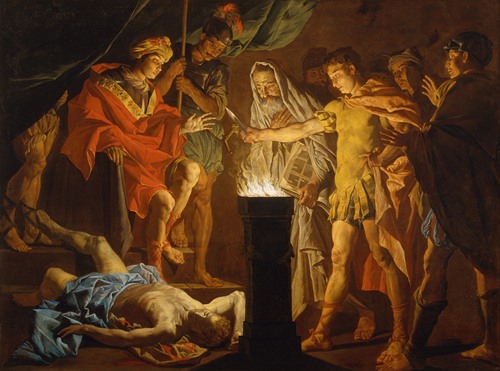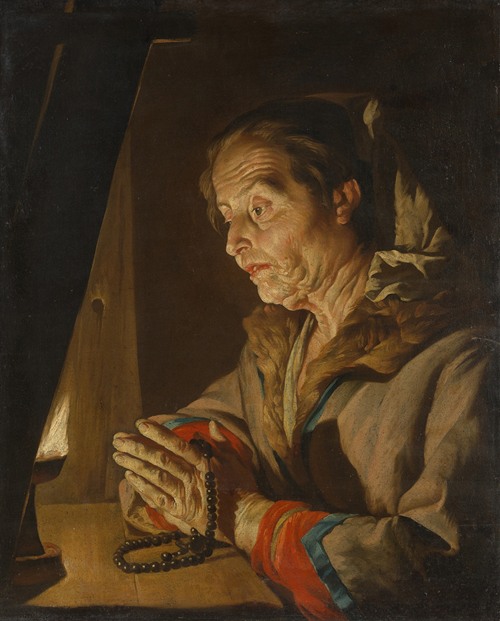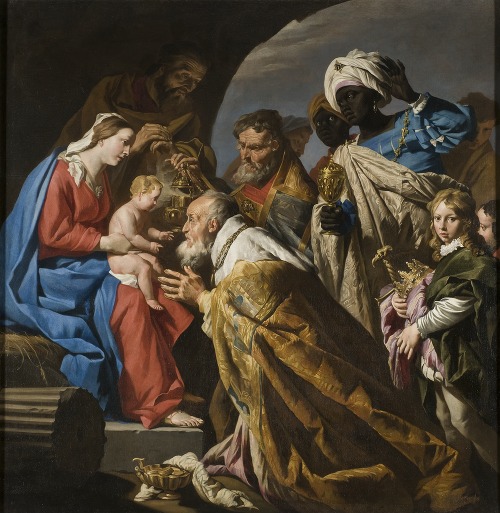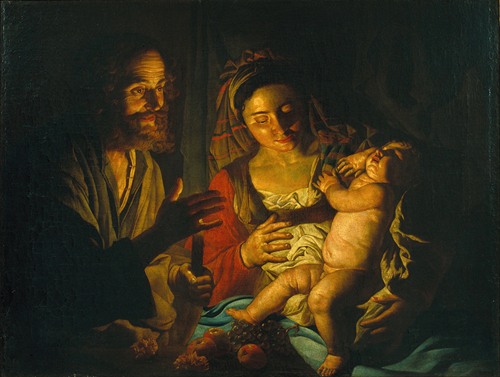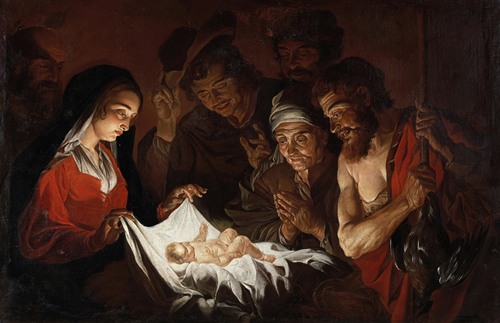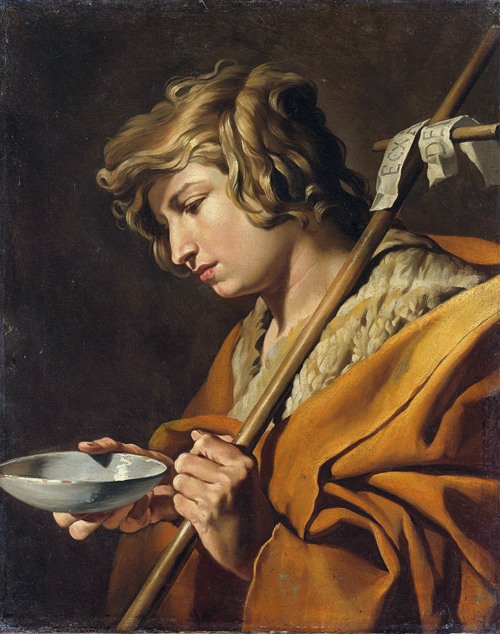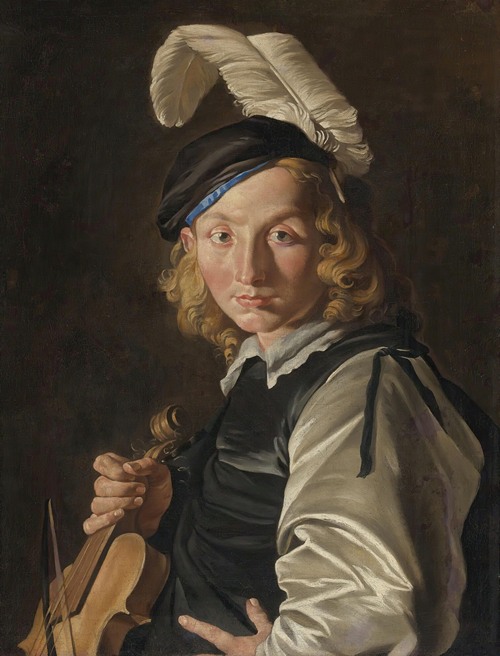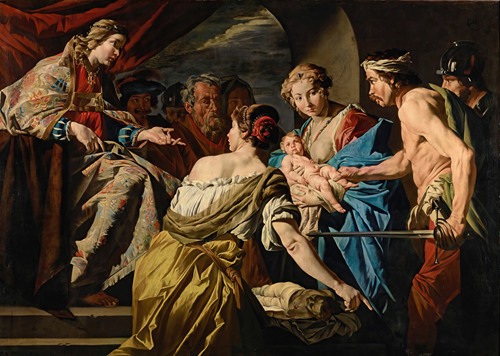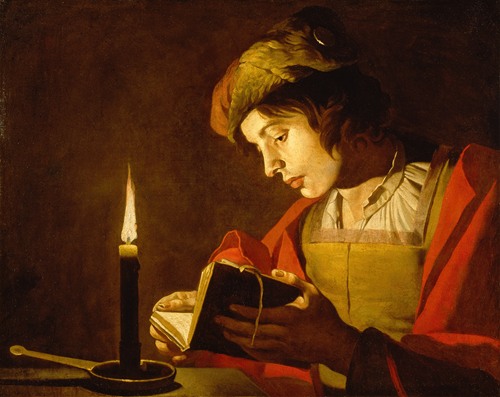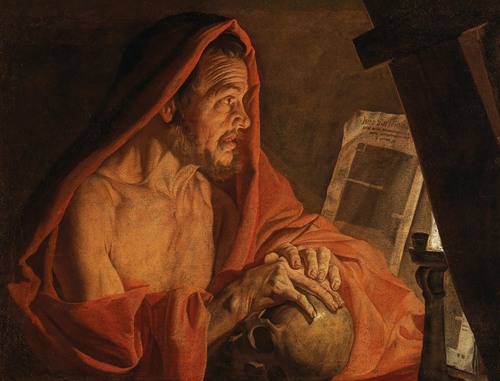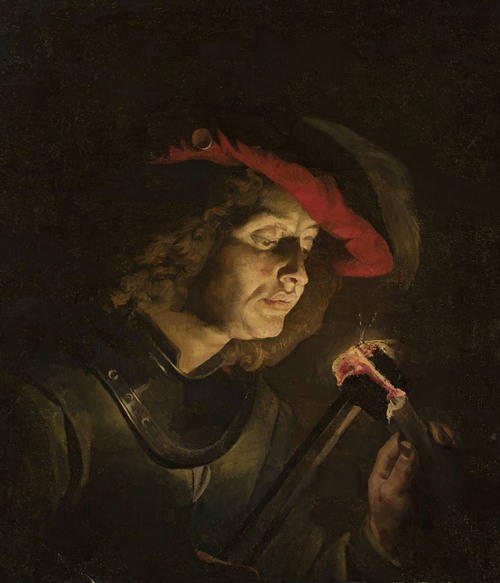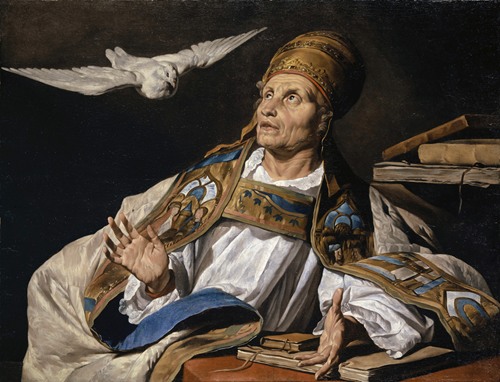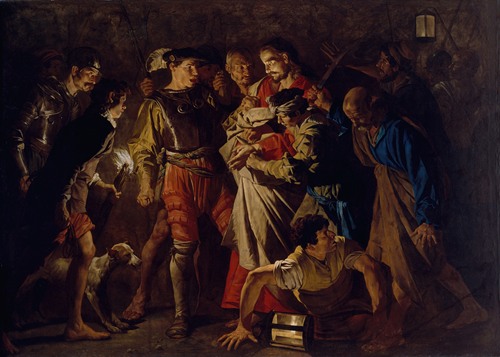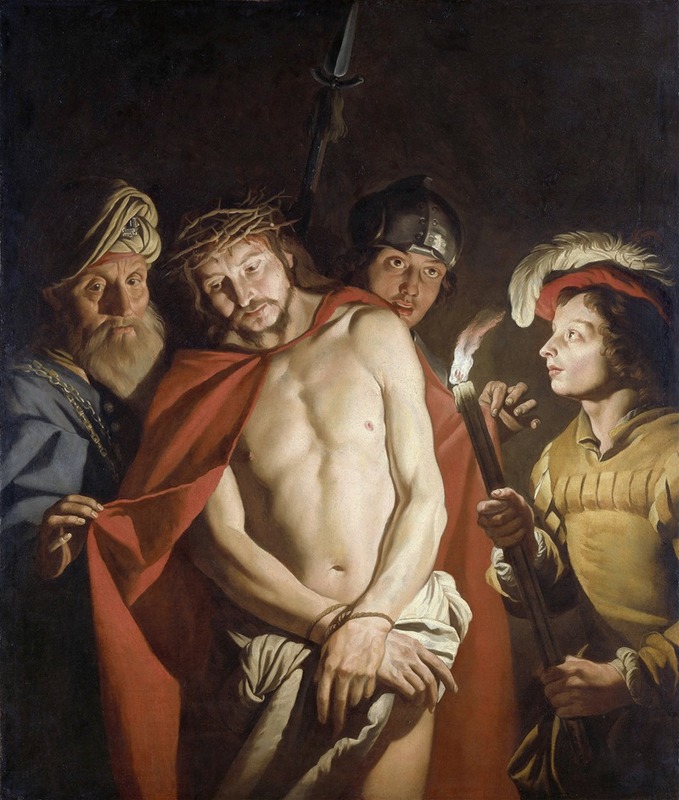
Matthias Stom or Matthias Stomer was a Dutch, or possibly Flemish, painter who is only known for the works he produced during his residence in Italy. He was influenced by the work of other followers of Caravaggio in Italy, in particular his Dutch followers often referred to as the Utrecht Caravaggists, as well as by Jusepe de Ribera and Peter Paul Rubens. He did not share the other Northern Caravaggisti's preference for humorous, and sometimes scabrous, genre scenes and elaborate decorative allegories but favored stories from the bible instead. He worked in various locations in Italy where he enjoyed the patronage of religious institutions as well as prominent members of the nobility.
Whereas in the past the artist was usually referred to as Stomer, it is now believed that his actual name was Stom, as this is the name he used as his signature. It was suggested before that his name 'Stom', which means 'dumb' in Dutch, was given to the artist as a nickname on the assumption that he suffered from this disability. However, there is no evidence for this thesis.
Information about his life is sketchy. His birthplace is undocumented and cannot be determined with any certainty. The Dutch art historian G.J. Hoogewerff wrote in 1942 that the artist was born in Amersfoort, near the city of Utrecht. Hoogewerff's source for his statement is unknown and untraceable. The municipal archives of Amersfoort do not record any Stom. The family name Stom by which he was in fact known during his lifetime is a Flemish name common in the Southern Netherlandish. Most people who bore the name in the Dutch Republic of that time would have been immigrants from the Southern Netherlands. It is therefore very well possible either that Stom was himself Flemish and spent most of his early life and even career in the Southern Netherlands or, alternatively, that he was an émigré (or the son of an émigré) to the Dutch Republic.
It was traditionally believed that he was a pupil of Gerard van Honthorst particularly because of the closeness of their style. However, van Honthorst himself did not return from Italy to his native city Utrecht until 1620. It is unlikely that Stom would have embarked upon an apprenticeship with van Honthorst when he was already 20 years old. This still leaves open the possibility that Stom received supplemental training in the workshop of van Honthorst after initially training elsewhere. Alternatively, he could have trained with Hendrick ter Brugghen, another leading Utrecht Caravaggist, who had returned from Italy in 1614, or with other painters such as Joachim Wtewael, Paulus Moreelse or Abraham Bloemaert. No documentary evidence to prove Stomer's apprenticeship exists. If Stom was in fact Flemish, the style of his work, which displays links to early 17th-century Flemish painting, might point to a training in the Southern Netherlands, possible with the Antwerp Caravaggist Abraham Janssens. There exists no documentary evidence to support such a training.
The earliest documentary evidence of Stom dates to 1630, when a 'Mattheo Stom, fiamengo pittore, di anni 30.' (Matthias Stom, Flemish painter of 30 years old), was recorded living with the French painter Nicolas Provost in the Strada dell'Olmo, Rome. His then residence was the former apartment of the Dutch painter Paulus Bor from Amersfoort who had left Italy four years earlier. Stom was recorded living at this location until 1632. The aforementioned record makes it possible to put the birth of Stom around the year 1600.
Prior to 1635 Stom left Rome to settle in Naples, where he resided until at least 1640. In Naples he was exposed to the influence of the Spanish Caravaggist painter Jusepe de Ribera. His most important commissions from his Napoletan period are for a series on the Passion of Christ made for the Capuchin Church of Sant’Efemo Nuovo. These works were lost after this church was turned into a prison in 1865. During his stay in Naples he was likely an influence on local painters Domenico Viola and Domenico Gargiulo. Some payments and a court case against him at the ecclesiastical court of Naples attest to his presence in Naples. The case was filed by his pupil, Mattheus De Roggiero, which shows he operated a workshop in Naples. From his social contacts with English and Dutch sailors it appears that he was more integrated with the expat community than with local society. He nevertheless had many local patrons as is demonstrated by contemporary Neapolitan inventories. The prosperous Antwerp merchant Gaspar Roomer who resided in Naples may have facilitated his commercial success, although there is no documentary evidence for this. It appears that his characteristic candlelight scenes with half figures with their characteristic combination of elements from the oeuvres of Gerrit van Honthorst and Rubens were particularly popular with the local clientele. Stom's documented paintings show no sign of interest in Neapolitan artists of his time. Likely Stom left Naples after the novelty of his work had worn out, having been unable or unwilling to adapt.
He is recorded in Palermo in Sicily in 1641 when he delivered paintings for churches in nearby Caccamo and Monreale. During his stay in Sicily he painted, amongst others, three paintings for Antonio Ruffo, the duke of Messina, who was an important collector of Italian, Flemish and Dutch art.
Several pictures by Stom were in Maltese collections, which points to Stom having patrons on Malta. It is not known whether he worked on Malta. The last documentation for Stom's activities in Sicily dates to 1649. Thereafter, in 1652, we find a reference to a large altarpiece of the Assumption of the Virgin with Three Saints for the church of Santa Maria de Lorino, in the town of Chiuduno near Bergamo in Lombardy. Stom could have shipped this altarpiece from Sicily but it is more likely that he was active in northern Italy in the last years of his life. There is no record on Stom after 1652. A Matteo Stom or Matthias Stom the younger is known to have produced a number of battle paintings in the late 17th-century in Northern Italy. He may have been the son or grandson of Stom.
It is not known when or where he died. It may have bee in Sicily, or alternatively in Northern Italy, in or after 1652.
